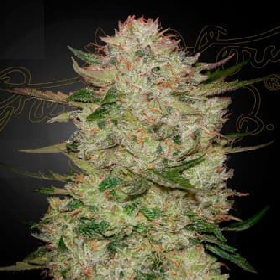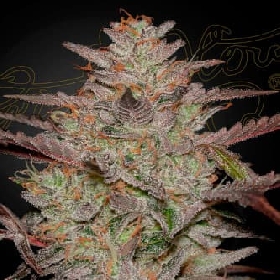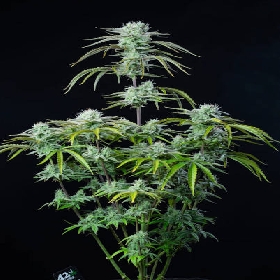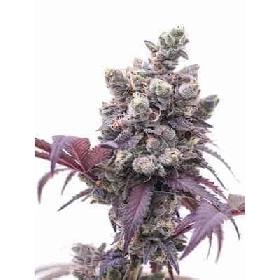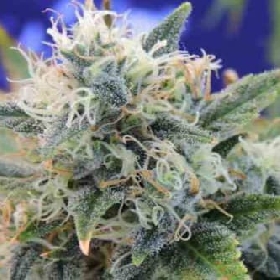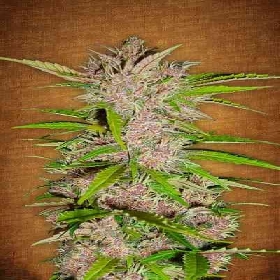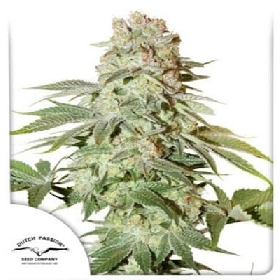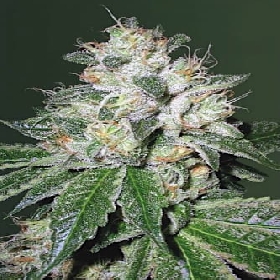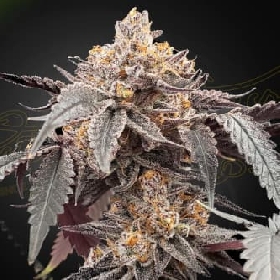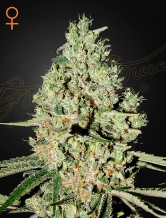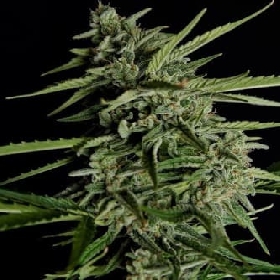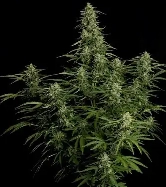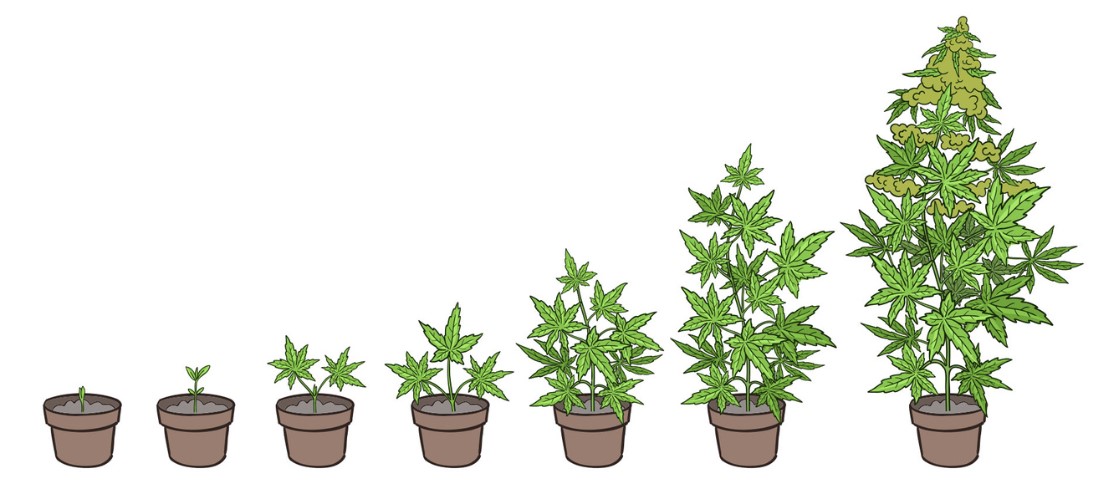
The right way to grow autoflowering cannabis seeds
Growing Autoflowering cannabis seeds - A guide
Growing autoflowering strains is becoming increasingly popular and there are more than enough reasons for this. In this guide, you'll learn everything you need to know about the practical genetics and why growing them can be worthwhile, even though yields still sometimes lag behind those of light-dependent strains.
The introduction of autoflowering seeds took place around the millennium. Clever cannabis seed breeders had managed to cross sativa strains and indica strains with cannabis ruderalis genes in such a way that they initiated flowering regardless of the time of year, effectively the daily number of light hours. At that time, however, these special breeds were still smiled at by serious growers, as they did not even come close to conventional varieties in terms of performance and yield. It took several years and numerous trials for the genetics to mature and evolve to the point where they simply could no longer be ignored. Apart from the disadvantage of lower yields, autoflowering strains also offer a number of advantages that will make every grower's heart beat faster.
When growing autoflowering cannabis seeds indoors, there is no need to worry about changing the number of lighting hours. The plants change from the vegetative phase to the flowering phase by themselves after a period of time that is fixed in their genetics. This means that the lighting time can simply remain the same throughout the entire growing period.
Another advantage is that most autoflowering varieties have a very short growing cycle overall. The growing phase usually lasts only 4 to 6 weeks and the flowering phase is also completed after a few weeks. This allows for more growing cycles over the course of the year, thus compensating for the somewhat lower yields that tend to occur. This way, growers of autoflowering strains always have fresh weed in their stash and can change strains more frequently if needed.
For those who grow on the sly, autoflowering seeds have another advantage. The resulting plants are, on average, significantly smaller than their light-dependent counterparts and often only reach growth heights of less than one meter in an indoor scenario.
Which autoflowering plants are right for me?
As with light-dependent plants, there are several subcategories in the autoflowering seed category, each with countless varieties. Basically, there are sativa, indica, and hybrid strains. Even to grow CBD weed, you can now resort to autoflowering varieties. The strains differ from each other in effect, taste, yield and appearance and should be selected accordingly. Generally speaking, some strains are probably closer to the photoperiod model than others, but as mentioned earlier, the overall quality of autoflowering plants has increased a lot.
Which are the right plants for your needs depends on a number of factors. If you're mainly after high yields, you should take a closer look at the Auto HighCloudZ and Auto AlienZ strains from Green House Seed Company. Strawberry Banana Auto by Fast Buds convinces with an extremely high THC content of 25% (for an autoflowering strain) and Auto Gelato #33 comes pretty close to the delicious original in terms of taste. All these strains can be found here in the Linda Seeds assortment.
Please let me know when the product is available again:
Indoor or outdoor grow - this is what you have to consider!
Autoflowering varieties can also be grown in different ways. They have the advantage that they can in principle be cultivated all year round, as they do not depend on a certain number of light hours to switch to the flowering phase. In principle, the plants only need to be sown outside and watered regularly. In practice, however, you may not get ideal results without adding nutrients and a high-quality substrate.
For indoor growing, as with light-dependent varieties, you will need artificial lighting, or at least a very sunny balcony.
For best results, it is recommended to keep the conditions of the plants as constant as possible. This is easier to do indoors than outdoors. For indoor cultivation, it is recommended to purchase a grow tent. These are available at Linda Seeds in several different sizes. This way you can ideally combine the space in your home and your requirements.
Please let me know when the product is available again:
Please let me know when the product is available again:
The right setup
You might wonder what setup you need for growing autoflowering seeds. While outdoors you only need a well-located bed and high-quality substrate, indoors the requirements are a bit more extensive. Since autoflowering varieties usually do not grow very large, 5-12 l pots are usually sufficient for cultivation. Also, there is the advantage here that you don't have to repot your autoflowering plants. They can be placed in the final pot immediately after germination, or even germinated directly in the soil already in this pot.
Autoflowering plants are relatively sensitive to nutrients, so you should be careful not to overfeed the plants. If the leaves get brown tips, this may be a sign of burn from too much nutrients. Another potential problem can be water supply. Due to the smaller pot size, watering autoflowering plants moderately is enough. You should always let the substrate dry a bit before watering again. Otherwise, in the worst case, mold may form on the roots.
Finally, it is important to keep the pH, temperature and humidity in a range that is tolerable for the plants. The temperature should ideally be between 20 and 25 °C. Autoflowering varieties like a slightly acidic soil. This means that the pH should be between 6.0 and 6.5. Humidity during the growing phase can be between 40 and 70 percent. Once the flowering phase begins, a humidity of 50 percent is recommended.
Training methods should only be used carefully and sparingly. Due to the very short growth phase of autoflowering varieties, the plants do not cope very well with the stress caused by pruning, for example. However, there are tolerable methods, such as the low stress training method.
The best autoflowering strains for beginners are Girl Scout Cookies Auto, Fastberry by Fast Buds as well as Auto Power Plant by Dutch Passion and Auto OG Kush by Victory Seeds.
Autoflowering strains - this is what a complete growing cycle looks like
First, you need to germinate your Automatic seeds. This can be done either in damp kitchen paper, directly in the soil or in peat swell pots in a mini-greenhouse. You can find both here on Linda Seeds. After germination, the clock is ticking. After a genetically stored number of days, the plant moves from the growing phase to the flowering phase. In the meantime, the plant should of course grow as vigorously as possible, which is why you should not make any mistakes here.
In the growth phase, one should pay attention to sufficient nutrients. However, autoflowering varieties need less fertilizer than their photoperiod counterparts, which is why you should also pay special attention when fertilizing, so that the plants do not suffer from nutrient fires. In the growing phase, the plants need a lot of light, with a high blue component. In the subsequent flowering phase, a high red component in the light is beneficial, so full-spectrum LEDs should be used whenever possible.
When the majority of the trichomes have turned milky, it is the right time to harvest your Autoflowers. To do this, free the flowers as much as possible from the leaves surrounding them and then hang them up to dry. After about two weeks, the buds should be ready. The stems should break easily when they reach the proper dryness. The next step is to let the buds cure. To do this, pack them in airtight containers and air them once a day. The humidity in the container should be around 60 to 65 percent and can be controlled using a hygrometer.
Usually, the complete cycle is completed after 8 to 10 weeks. For an outdoor grow with poor conditions, it may take a little longer. Autoflowering strains with the shortest growing cycles include Guava x Gelato 41 Auto or Super Critical Automatic from Green House Seed Company, and Auto Orion F1 or Auto Milky Way F1 from Royal Queen Seeds. All these strains have growing cycles of just 6 to 8 weeks.
